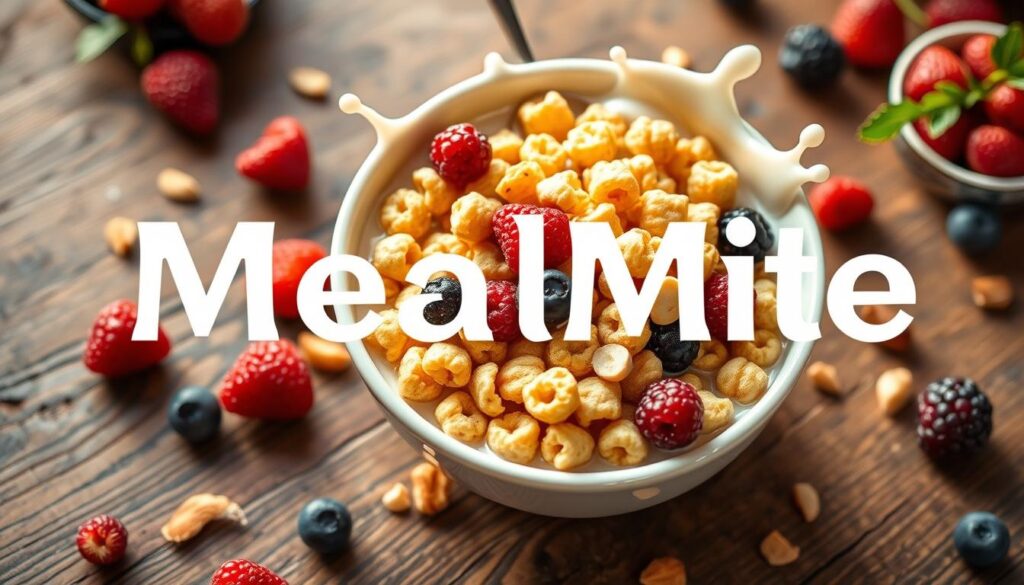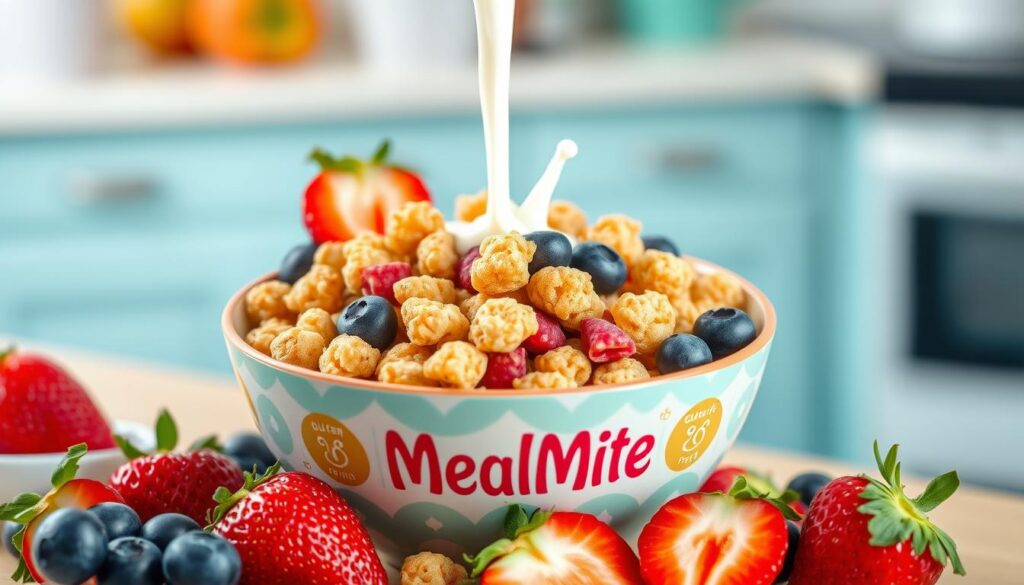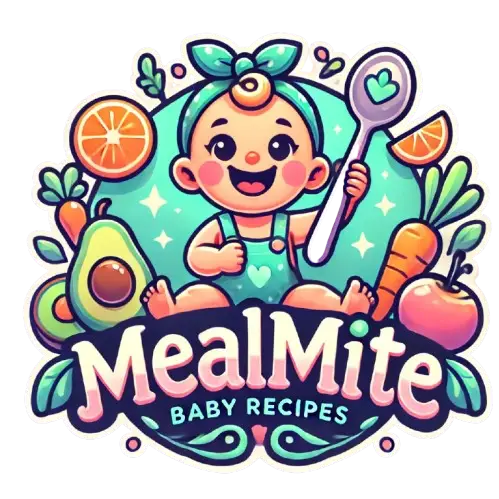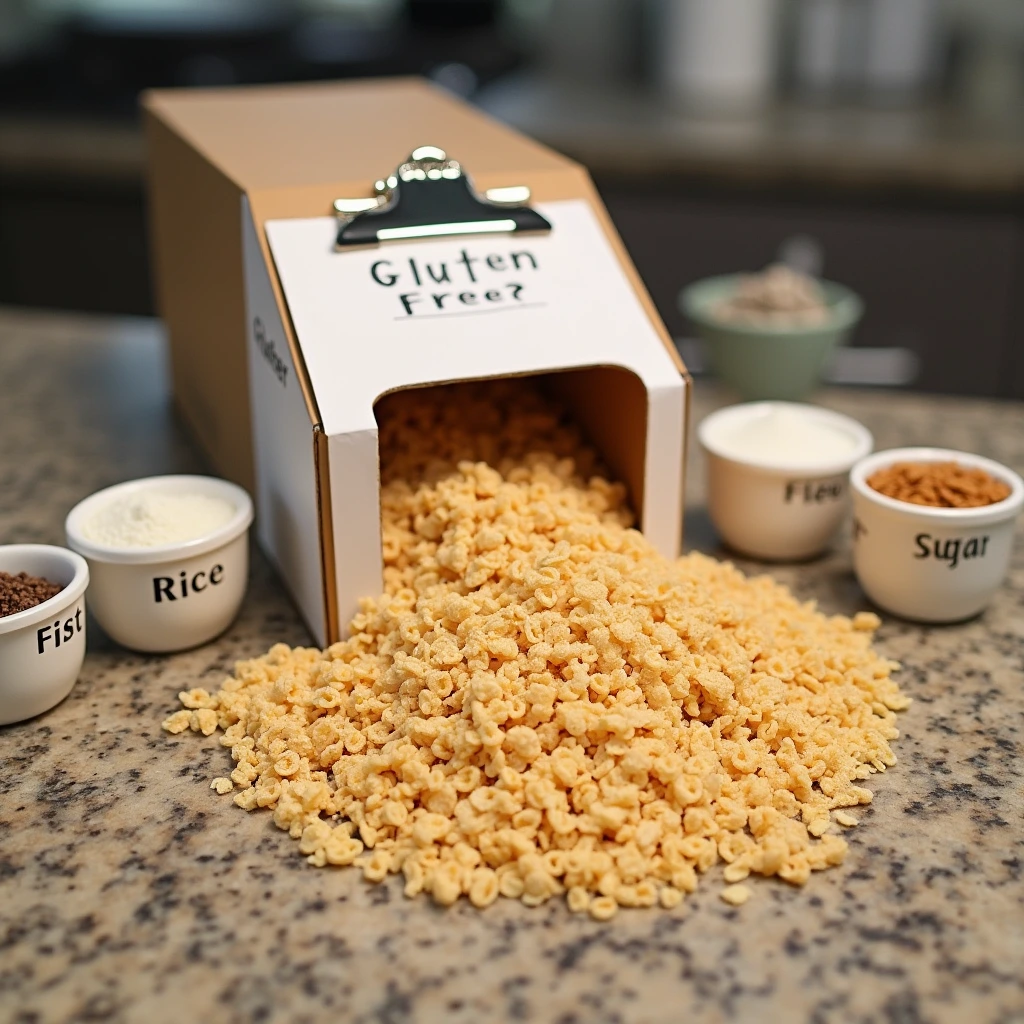Are Rice Krispies gluten free option for your family? It’s key for parents to know what’s in Rice Krispies and the risks of cross-contamination. Regular Kellogg’s Rice Krispies have malt syrup from barley, so they’re not gluten-free. This is important for those with celiac disease or gluten sensitivity who need a gluten-free diet.
Table of Contents
Looking for gluten-free cereal means finding options that are certified gluten-free. These must not have wheat, rye, barley, or their by-products. You can find gluten-free alternatives to Rice Krispies from brands like Nature’s Path and Barbara’s. These might cost more, but they’re safe for those with gluten intolerance.

Knowing what’s in Rice Krispies and the risks is key for making good diet choices. By picking gluten-free cereals and watching for cross-contamination, you can ensure a safe breakfast for your family. With more options like Chex and Lucky Charms becoming available, finding a gluten-free breakfast that everyone will like is getting easier.
Key Takeaways
- Regular Kellogg’s Rice Krispies are not gluten-free due to the presence of barley malt.
- Gluten-free cereal options are available, including Nature’s Path and Barbara’s.
- Gluten-free cereals can be more expensive than traditional options.
- Understanding Rice Krispies ingredients is vital for those with gluten intolerance.
- Gluten-free certification means cereals must be free from wheat, rye, barley, and their derivatives.
- Popular gluten-free cereals include Chex and Lucky Charms.
Understanding Rice Krispies: A Breakfast Classic
Rice Krispies have been a favorite in many homes for years. They have a long history that started in the early 1900s. Introduced in 1928 by Kellogg’s, they are known for their “snap, crackle, and pop” sound.
Many parents choose Rice Krispies for breakfast. They are made from simple ingredients like rice, sugar, and malt flavoring. The special processing makes them unique and fun to eat.
The History of Rice Krispies Cereal
The story of Rice Krispies is linked to the rise of breakfast cereals. In the early 1900s, cereals like Kellogg’s and General Mills were popular. Rice Krispies were among the first to use the “puffing” process.

Basic Ingredients and Composition
Rice Krispies are made from rice, sugar, and malt flavoring. These ingredients give the cereal its taste and texture. It’s a simple and easy choice for families.
Why Parents Choose Rice Krispies
Parents pick Rice Krispies for their kids because they are easy to make. They can be served with milk or as a snack. Plus, they are affordable. Rice Krispies have become a beloved breakfast choice in many homes.
Are Rice Krispies Gluten Free? The Direct Answer
Looking into Rice Krispies’ gluten-free status, we need to check the ingredients. Rice Krispies has rice, sugar, and malt flavoring from barley. Barley is a grain that contains gluten. So, traditional Rice Krispies are not gluten-free because of the barley malt.
If you have gluten intolerance or sensitivity, finding gluten-free alternatives is key. There are certified gluten-free cereals made from rice, corn, or other gluten-free grains. Always read the ingredient label to make sure it fits your dietary needs.

Here are some important points about Rice Krispies and other cereals’ gluten-free status:
- Rice Krispies contain barley malt, which is not gluten-free.
- Gluten-free alternatives are available, including cereals made from rice, corn, and other gluten-free grains.
- Always check the ingredient label to ensure that the product meets your dietary needs.
Knowing the ingredients and gluten-free status of Rice Krispies helps you make better diet choices. This way, you can meet your nutritional needs.
| Cereal | Gluten-Free Status |
|---|---|
| Rice Krispies | Not gluten-free due to barley malt |
| Gluten-free rice cereal | Gluten-free, made from rice and other gluten-free grains |
Breaking Down the Ingredients Label
Looking at the ingredients label of Rice Krispies is key. It shows what makes up this beloved cereal. Rice Krispies have malt syrup, made from barley, which has gluten. This is a big deal for those with celiac disease or gluten sensitivity, as they must avoid barley and malt syrup.
For a gluten-free diet, checking the ingredients label for gluten-free certification is important. This label means the product is made in a way that avoids gluten. Brands like One Degree, Nature’s Path, or Barbara’s offer gluten-free versions of Rice Krispies.
Main Components Analysis
Rice Krispies are made of rice, sugar, and malt syrup. But, it’s the malt syrup that’s a problem for those with gluten issues. Gluten-free options like Nature’s Path Organic Crispy Brown Rice are safer. They have organic brown rice, organic sugar, and sea salt.
Hidden Sources of Gluten
Gluten can hide in many ingredients, like barley malt extract in Kellogg’s Rice Krispies. This extract is found in many cereals. So, it’s important to look for gluten-free certification on the label. Choosing certified gluten-free products helps avoid cross-contamination and keeps diets safe for those with gluten sensitivity.

Manufacturing Process Concerns
The way Rice Krispies are made can lead to cross-contamination. To avoid this, picking products from manufacturers with strict gluten-free protocols is wise. Brands like Annie’s and Glenny’s offer gluten-free alternatives to Rice Krispies treats. This makes them safer for those with gluten intolerance.
| Product | Gluten-Free Certification | Ingredients |
|---|---|---|
| Kellogg’s Rice Krispies | No | Rice, sugar, malt syrup |
| Nature’s Path Organic Crispy Brown Rice | Yes | Organic brown rice, organic sugar, sea salt |
The Difference Between Regular and Gluten-Free Rice Krispies
Rice Krispies comes in two types: regular and gluten-free. The regular kind has malt syrup from barley, so it’s not gluten-free. But, Kellogg’s makes a gluten-free version in Canada. If you need gluten-free alternatives, many options are out there.
Some Rice Krispies varieties that are gluten-free include Malt O Meal, Wegmans, and Erewhon. These brands have certified gluten-free crispy rice cereal. They don’t use barley derivatives. You can also make your own gluten-free Rice Krispies Treats at home.
Here’s a look at the nutritional differences between regular and gluten-free Rice Krispies Treats:
| Nutrient | Regular Rice Krispies Treats | Gluten-Free Rice Krispies Treats |
|---|---|---|
| Calories | 188 kcal | 119 kcal |
| Carbohydrates | 31 g | 7 g |
| Protein | 1 g | 1 g |
In summary, for a gluten-free choice, you have many gluten-free alternatives. This includes certified gluten-free Rice Krispies varieties and homemade treats with gluten-free rice cereal.
Cross-Contamination Risks in Rice Krispies Production
Gluten-free manufacturing faces a big challenge: cross-contamination risks. Rice Krispies production is no exception. It involves steps that could mix with gluten-containing grains.
Kellogg’s, Rice Krispies’ maker, works hard to avoid this. They use special gluten-free lines, clean a lot, and test for gluten often. These steps help keep the cereal safe for those who can’t eat gluten.
But, cross-contamination can happen. It’s important to think about how we package and store these cereals. Gluten-free foods need their own space to avoid gluten.
To fight cross-contamination, quality control is key. Regular tests and checks on equipment and places are a must. Kellogg’s and others focus on gluten-free to keep their products safe for those with gluten issues.
| Manufacturing Facility Practices | Packaging and Storage Considerations |
|---|---|
| Dedicated gluten-free production lines | Separate storage facilities for gluten-free cereals |
| Rigorous cleaning and sanitation protocols | Regular testing for gluten contamination |
Health Implications for Gluten-Sensitive Children
As a parent, knowing about gluten sensitivity and celiac disease in kids is key. About 1% of people worldwide have celiac disease, an autoimmune issue caused by gluten. Kids with this disease are more likely to face mental health issues like depression and mood swings.
Managing gluten sensitivity and celiac disease in children involves a few important steps:
- Avoiding cross-contamination of gluten-free foods with gluten-containing foods
- Choosing products that are specificially labeled or certified gluten-free
- Being cautious of packaged rice mixes or dishes that may have hidden gluten from sauces or seasonings
Even a small amount of gluten can harm those with celiac disease. So, they must avoid gluten completely.
Children with celiac disease need regular mental health checks to manage their condition well and avoid mental health problems.
Understanding gluten sensitivity and celiac disease helps you protect your child’s health. Always pick gluten-free products, watch out for cross-contamination, and talk to a doctor for advice tailored to your child.
Gluten-Free Alternatives to Traditional Rice Krispies
Looking for gluten-free options instead of traditional Rice Krispies? There are many choices out there. You can find gluten-free crispy rice cereals in stores or make your own at home. Some great store-bought options include Barbara’s Organic Crisp Rice Cereal, One Degree Sprouted Rice Crisps, and Nature’s Path Crispy Rice cereal.
For homemade recipes, you can whip up gluten-free Rice Krispies treats. Just use gluten-free crispy rice cereal, marshmallows, and salted butter. It’s a fun and simple way to make a gluten-free dessert. Here’s a look at some store-bought options:
| Cereal Brand | Price Range |
|---|---|
| Barbara’s Organic Crisp Rice Cereal | $4.19 – $5.99 |
| One Degree Sprouted Rice Crisps | $4.99 – $5.99 |
| Nature’s Path Crispy Rice cereal | $4.99 |
| Aldi’s gluten-free crispy rice cereal | $1.65 |
Always check the ingredient labels and look for certifications to make sure they fit your dietary needs. With a bit of creativity, you can enjoy gluten-free alternatives to traditional Rice Krispies. And you’ll have a tasty breakfast or snack option.
Reading Food Labels: A Parent’s Guide to Gluten
Understanding food labels is key when managing a gluten-free diet for your child. You need to know the ingredients and certifications that ensure the product is safe. Food labels can be tricky, but knowing what to look for is important. Look for gluten-free certification, which means the product meets certain standards.
Some common terms to watch for on food labels include “gluten-free,” “made in a dedicated gluten-free facility,” and “processed in a facility that also processes gluten-containing grains.” Be cautious of terms like “may contain gluten” or “made in a facility that also processes wheat,” as they indicate a risk of cross-contamination.
Common Gluten Terms to Watch For
- Gluten-free: This term indicates that the product contains less than 20 parts per million of gluten.
- Made in a dedicated gluten-free facility: This term ensures that the product is processed in a facility that only handles gluten-free ingredients.
- Processed in a facility that also processes gluten-containing grains: This term indicates a risk of cross-contamination.
Certification Symbols Explained
Certification symbols, such as the Gluten-Free Certification Organization (GFCO) logo or the Celiac Support Association (CSA) logo, can provide assurance. They show that the product meets certain gluten-free standards. Look for these symbols on food labels to ensure the product is safe for your child’s consumption.
Making Safe Breakfast Choices for Your Child
As a parent, you want your child to start the day right with a healthy breakfast. For kids with gluten sensitivity or celiac disease, picking the right breakfast options is key. Now, with more gluten-free diets out there, finding good breakfast cereals is easier.
When picking breakfast options, think about what’s in them and how nutritious they are. Many gluten-free cereals use whole grains and have important vitamins and minerals. Some brands even offer gluten-free diets that taste and feel like the regular ones.
Always check the ingredient label for the “certified gluten-free seal.” This means the product is safe for those with gluten issues. You can also try making your own, like gluten-free oatmeal or smoothie bowls, to fit your child’s diet.
- Look for certified gluten-free cereals
- Choose whole grain options
- Consider homemade alternatives
By doing your homework on breakfast options, you can give your child a healthy start. With a bit of planning and creativity, you can make a gluten-free diet that’s tasty and good for them.
Tips for Managing a Gluten-Free Diet with Kids
Managing a gluten-free diet for kids can be tough. But, with the right strategies, it gets easier. The key is to have a solid meal planning plan. This means planning and preparing gluten-free meals ahead of time. You need to think about what your child likes and needs.
It’s important to plan well to make sure your child gets all the nutrients they need. Here are some tips to help you manage a gluten-free diet for kids:
- Plan your meals in advance to ensure that you have a steady supply of gluten-free ingredients.
- Involve your child in the meal planning process to help them feel more in control of their diet.
- Keep a variety of gluten-free snacks on hand to prevent hunger and cravings for gluten-containing foods.
It’s also key to teach your child about their gluten-free diet. Teach them how to read food labels and find gluten-free options. By working together, your child can thrive on a gluten-free diet and learn healthy eating habits for life.
With the right meal planning and education, managing a gluten-free diet with kids can be a positive experience for everyone.
| Gluten-Free Meal Planning Tips | Benefits |
|---|---|
| Plan meals in advance | Reduces stress and ensures a steady supply of gluten-free ingredients |
| Involve your child in meal planning | Helps them feel more in control of their diet and develops healthy eating habits |
| Keep a variety of gluten-free snacks on hand | Prevents hunger and cravings for gluten-containing foods |
Conclusion: Making Informed Choices for Your Family’s Health
When choosing breakfast cereals, picking gluten-free options is key for your family’s health. Rice Krispies might be a favorite, but knowing about gluten risks is important. Looking into other recipes can help your family start the day right without worry.
Reading labels and learning about how cereals are made is essential. You can also try making your own gluten-free breakfasts. This way, you ensure your family gets safe, healthy meals that fit their dietary needs. Always put your family’s health first, and with the right knowledge, you can make choices that keep them happy and healthy.
FAQ
Are Rice Krispies gluten-free?
No, traditional Rice Krispies are not gluten-free. They contain malt flavoring from barley, which has gluten.
What are the main ingredients in Rice Krispies?
Rice Krispies are made of rice, sugar, salt, and malt flavoring. The malt flavoring is the main gluten source.
Can individuals with celiac disease or gluten sensitivity consume Rice Krispies?
No, people with celiac disease or gluten sensitivity should avoid traditional Rice Krispies. This is because of the gluten in the malt flavoring.
Are there any gluten-free alternatives to Rice Krispies?
Yes, there are gluten-free options like Kellogg’s Gluten-Free Rice Krispies. You can also find store-bought or homemade gluten-free rice cereals.
What are the risks of cross-contamination in Rice Krispies production?
Cross-contamination risks in Rice Krispies production include gluten ingredients touching the cereal. This can happen during manufacturing, packaging, or storage.
What are the symptoms of gluten sensitivity and celiac disease in children?
Symptoms in kids include stomach pain, bloating, and diarrhea. They might also feel tired and have trouble growing or developing.
How can parents read food labels to identify gluten-free products?
Parents can spot gluten-free products by looking for “gluten-free” or “certified gluten-free” labels. They should also know where gluten is found and look for gluten-free symbols.
What are some tips for managing a gluten-free diet with kids?
Managing a gluten-free diet for kids involves meal planning and navigating social situations. It’s also important to educate and support both parents and children.


1 thought on “Are Rice Krispies Gluten Free? (What Every Parent Should Know)”